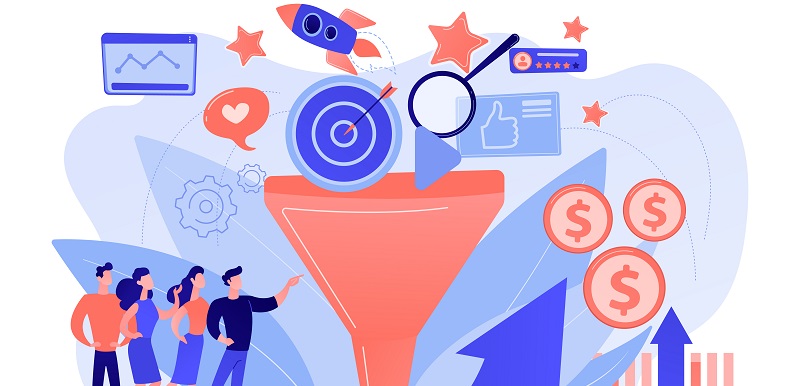Demand generation is an essential process for businesses, involving the creation and cultivation of interest in a product or service. Its ultimate goal is to generate high-quality leads that can be nurtured into loyal customers. In an increasingly competitive market landscape, demand generation plays a crucial role in driving business growth and ensuring long-term success.
Definition of Demand Generation and Importance of Generating High-Quality Leads
Demand generation is a multifaceted process that combines creativity, data-driven insights, and customer-centric methodologies. It goes beyond traditional marketing tactics by focusing on creating awareness and visibility of a brand. By establishing the company as a trusted authority in the industry, demand generation paves the way for attracting and capturing high-quality leads.
Components of Demand Generation
Successful demand generation campaigns require a unique blend of creativity, data-driven insights, and customer-centric approaches. This involves leveraging innovative strategies and techniques to grab the attention of the target audience and encourage meaningful interactions. At the core of demand generation lies the objective of creating awareness and visibility for a brand. By implementing targeted marketing campaigns, businesses can position themselves as trustworthy and reliable authorities in their respective industries.
Targeted Marketing Campaigns and Personalized Experiences
Demand generation relies on targeted marketing campaigns that are tailored to specific audiences. Through highly personalized experiences, businesses can capture the attention of potential customers and deliver relevant messaging, increasing the chances of driving conversions.
Meaningful Interactions Throughout the Customer Journey
Demand generation strategies emphasize engaging prospects throughout their customer journey. By providing valuable and relevant content, businesses can foster engagement and build enduring relationships with their target audience. By nurturing prospects with personalized interactions, businesses can establish trust and credibility, fostering long-lasting relationships. This enables them to stand out from competitors and retain customers in an increasingly saturated market. Demand generation is not a one-time effort; it is a continuous process. By consistently delivering valuable content and compelling offers, businesses can position themselves as reliable and knowledgeable resources, earning the trust and loyalty of potential customers.
Reaching a Wider Audience and Tapping into New Markets
Effective demand-generation techniques enable marketing teams to reach a wider audience and tap into new markets. This opens up opportunities for business growth and expansion, allowing organizations to expand their customer base and increase market share.
Opportunities for Business Growth and Expansion
By utilizing demand generation strategies, businesses can identify untapped market segments and develop tailored campaigns to address their specific needs. This paves the way for sustainable business growth and helps organizations stay ahead in a rapidly evolving marketplace.
Converting Leads into Customers
Demand generation is not merely about attracting new customers; it also focuses on nurturing potential leads. By providing valuable information and educational resources, businesses can guide prospects through the buyer’s journey, increasing the likelihood of converting them into paying customers. By implementing effective demand-generation techniques, businesses can maximize their conversion rates and improve overall sales performance. By delivering personalized experiences and engaging prospects at every touchpoint, organizations can increase their chances of closing deals and driving revenue.
Nurturing Existing Customers
Demand generation goes beyond acquiring new customers, it also focuses on nurturing existing ones. By providing exceptional customer experiences, businesses can encourage repeat business and foster loyalty, creating brand advocates who are more likely to recommend products or services to others.
Reducing Customer Churn
By continuously engaging with existing customers and addressing their evolving needs, demand generation helps reduce customer churn. This proactive approach increases customer satisfaction levels, leading to long-term retention and ultimately driving profitability.
Contributing to Long-term Business Growth
Demand generation plays a vital role in creating a consistent pipeline of interested prospects for businesses. By implementing effective lead generation strategies, organizations ensure a steady influx of potential customers, contributing to sustainable growth. By converting leads into loyal customers through personalized interactions and a customer-centric approach, demand generation increases the chances of building long-lasting customer relationships. By building trust, delivering value, and exceeding expectations, businesses can cultivate a loyal customer base that is more likely to contribute to long-term success.
Ensuring Stability and Profitability of the Organization
By consistently generating high-quality leads and converting them into loyal customers, demand generation ensures the stability and profitability of an organization. A solid customer base not only drives revenue but also provides a reliable foundation for future growth and expansion.
In a competitive business landscape, demand generation has become an indispensable tool for fueling business growth. By creating and cultivating interest in products or services, businesses can attract high-quality leads, nurture them into loyal customers, and build enduring relationships. Through targeted marketing campaigns, personalized experiences, and consistent engagement, demand generation contributes to long-term success, ensuring the stability and profitability of an organization in today’s dynamic market environment.

